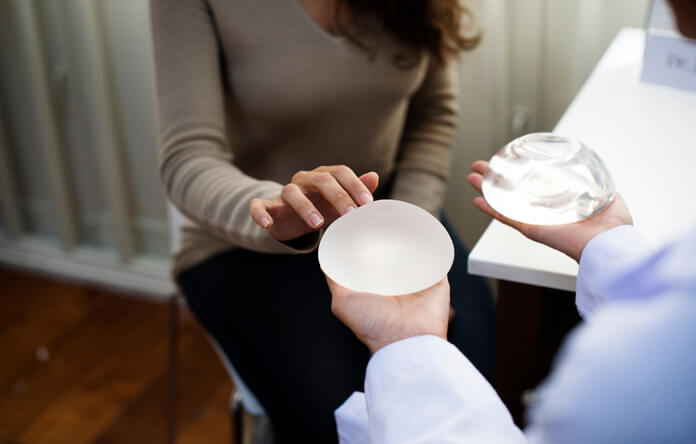お買い物カゴに商品がありません。
Women's Talk
Breast Implants – Know the Risks, Take the Precautions
Breast implants are done mainly for two reasons:
- Purely cosmetic reasons
- As a corrective surgery, after resection with breast cancer
There are two common types of implants used – silicone saline implants and silicone gel implants.
- In the first one, empty silicone implants are put into place and then injected with a saline solution.
- In the second, pre filled silicone cups with saline gels are put in place to serve as implants.
Breast implants were introduced in the 1960s and were widely used in the 1980s. However, a number of complications were also identified and the demand for implants began to decrease. Listed below are some risks and precautions one could take to avoid these risks.
- Surgical complications: As with any surgery, there is a wide range of possible complications ranging from anesthesia, bleeding, delayed or failure to heal, infection, scar formation, etc. The nerve supply could be affected during the surgery, which might affect the sensation in the nipple area. The precaution to take here would be to ensure you are in safe hands. Only sign up with a surgeon who someone you know can validate and vouch for.
- Infection: Not just as a surgical complication, but the infection can occur later too. The implants are artificial substances implanted and so have the potential to cause infection along the incisions. As a precaution, strictly follow the prescribed post-operative instructions which would include a course of antibiotics. Any changes in the surgical site should be reported immediately to the medical team.
- Implant rejection: The implant is a foreign substance at the end of the day and can be rejected by the body. This can induce an allergic reaction and require removal of the implant. As a precaution, doctors would test your body’s compatibility with the implant material before actually going ahead with the implant.
- Ruptures: Whatever the type of implants, they can rupture with the fluid draining out and the shape is lost. Implants with saline water filled in do not require repeat surgery, as the saline water will get absorbed into the body. Those with silicone gel require repeat surgery to remove the gel from the body. Ruptures can cause deflation of the breasts, leading to a bigger or worse esthetic problem than the original condition. Discuss this risk ahead of the procedure with your doctor.
- Contracture: Once the implant is positioned and the incision closed, the skin will contract to close up, and this can lead to tightening of the skin and scar formation around the implant. Putting yourself in safe hands reduces this risk.
- Cancer: Though not strongly established, the Food and Drug Administration (FDA) did identify a possible relationship between breast implants and anaplastic large cell lymphoma. Therefore, go over this with your doctor before signing up.
Breast implants may sound attractive but have their own risks. The doctor would explain in detail and get your consent to proceed. Make sure you take adequate precautions before going ahead with the implant.
No surgery and no risk: BellaCREAM

